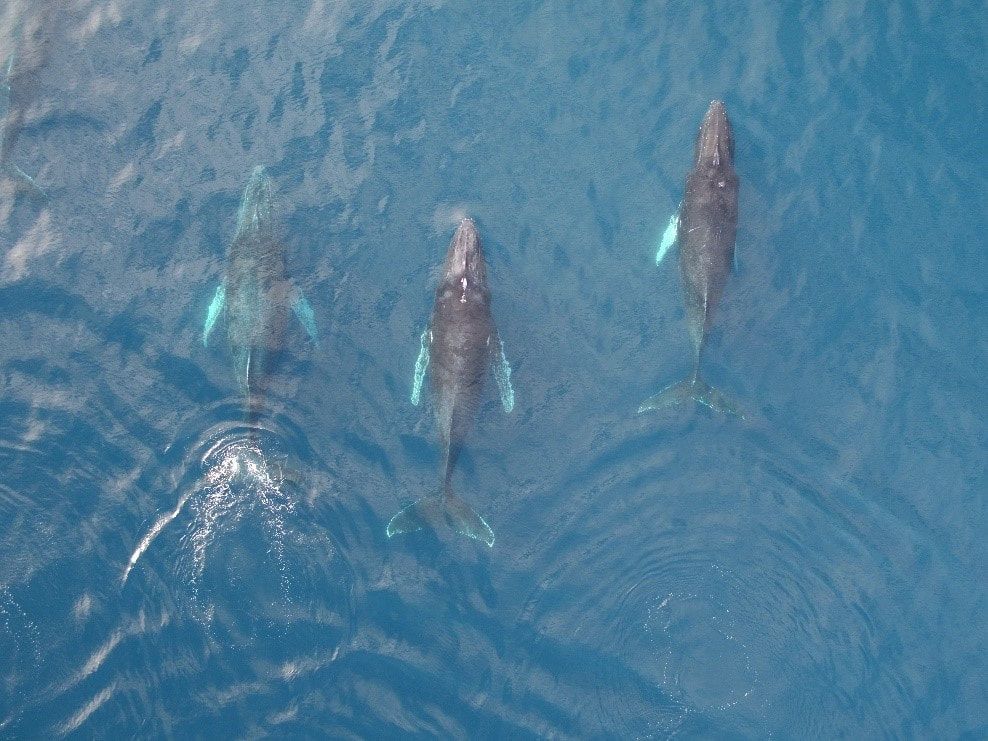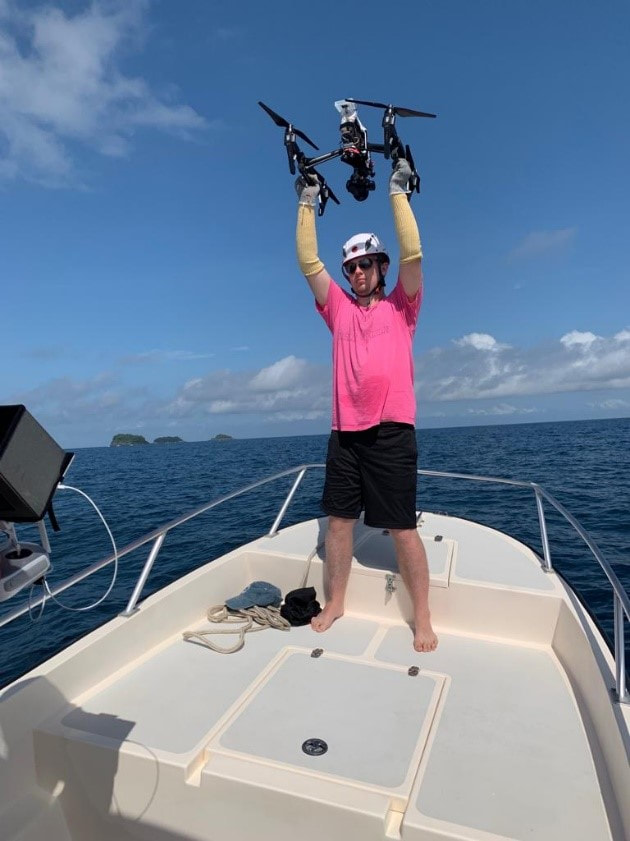By Colin Perkins-Taylor
The 2019 field season has been incredible so far, and I don’t think I will ever get over the fact that I get to study whales every day. Even on the slow days when it takes us an hour or two to find a whale, we never lose hope and always manage to find another individual or group. We also have seen a whale breach every day, so that doesn’t hurt either….
I am a rising senior at Swarthmore College here working with Dr. Matt Leslie from the Biology Department at Swarthmore. He studies cetaceans using drones and genetics. Specifically, he studies the differences between species, populations and individuals to determine if species and populations are unique, and determine if they need specific conservation plans. With the drones, we collect aerial photos and accurate altitude data to measure whales in various ways: their body length, head length, tail length, body width, etc. These details allow us to understand the size and health of the humpback whales here in Panama, and compare them to other populations. In addition, by collecting aerial images of groups of whales, we can better understand individual roles in social interactions. For instance, in a competitive group interaction, many male humpbacks tend to pursue a female; by combining genetic information from skin biopsy samples collected for each whale (including if the whale is a male of female) with the drone photos, we can determine which individual is the female and her position in relation to the male “pursuers.”

All of this probably sounds a little easier on paper than it actually is. Fieldwork always comes with challenges, and we’ve had our share, especially with the drone part.
Just a few weeks ago we were setting up a new drone for the first time back at Swarthmore. Matt and I flew it a little bit on our college campus before coming here. In addition, a fellow student at Swarthmore built an entire laser altimeter (LIDAR) system from scratch in less than three weeks; he finished the day before we left!! This system measures the distance from the drone to the whale, vital information needed to calculate the size of the whale. The first challenge we had to figure out a way to install it on the drone, which took some creativity. Then, in the field the LIDAR had several errors that required troubleshooting before the measurements could be collected.

While it has been challenging, in a matter of a few short weeks, we are now measuring whales! It’s been a great learning experience, and I’m hopeful that we have learned from all our mistakes and it will just be smooth sailing from here on out!


